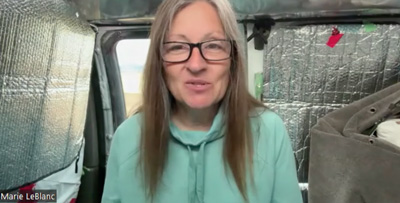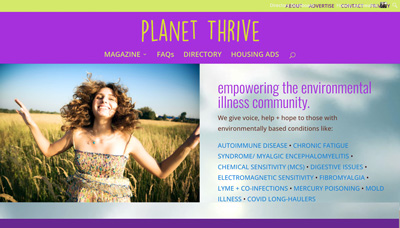 The July 24, 2009 Health section of the LA Times features Kathy Hemenway, my neighbor in Snowflake, Arizona, and her non-toxic house. The feature story is accompanied by a photo essay which shows her fully tiled bedroom (walls, floor, and ceiling), and unique TV set-up with a large screen monitor in the living room and the TV 200 feet away in her barn. There she videotapes shows and plays them back in her home on DVD.
The July 24, 2009 Health section of the LA Times features Kathy Hemenway, my neighbor in Snowflake, Arizona, and her non-toxic house. The feature story is accompanied by a photo essay which shows her fully tiled bedroom (walls, floor, and ceiling), and unique TV set-up with a large screen monitor in the living room and the TV 200 feet away in her barn. There she videotapes shows and plays them back in her home on DVD.
From the article:
Hemenway is one of millions of Americans who believe that sprays meant to freshen the air actually pollute it, that chemicals meant to beautify our yards in fact poison them, and that many of the products and materials that make modern life fast and convenient also make people sick. They cite studies connecting a host of suspect substances to a host of human illnesses, from headaches and sniffles to immune disorders and cancer.
Most people can’t move to Snowflake and build “safe houses,” of course (and if too many of us did, we’d mess up the air quality anyway). Fortunately, most are not as sensitive to environmental pollutants as Hemenway, whose condition is recognized by many — but not all — medical professionals as “environmental illness.”
Still, a connection between health and the environment is widely recognized in the medical and scientific communities. More than 30 years ago, for example, the Air Pollution Health Effects Laboratory was established at UC Irvine especially to study the connections between air quality and health. Raising awareness of these connections empowers people, says Robert Phalen, the laboratory’s founder and current director and also a professor of medicine.










Hello, my name is Tambra i am suffering from mcs. I am searching for safe housing in Arizona for rent please. Everyday is a struggle for me. My husband and i moved from Florida a few months ago suffering from mold.
Thank you,Tambra Curtis